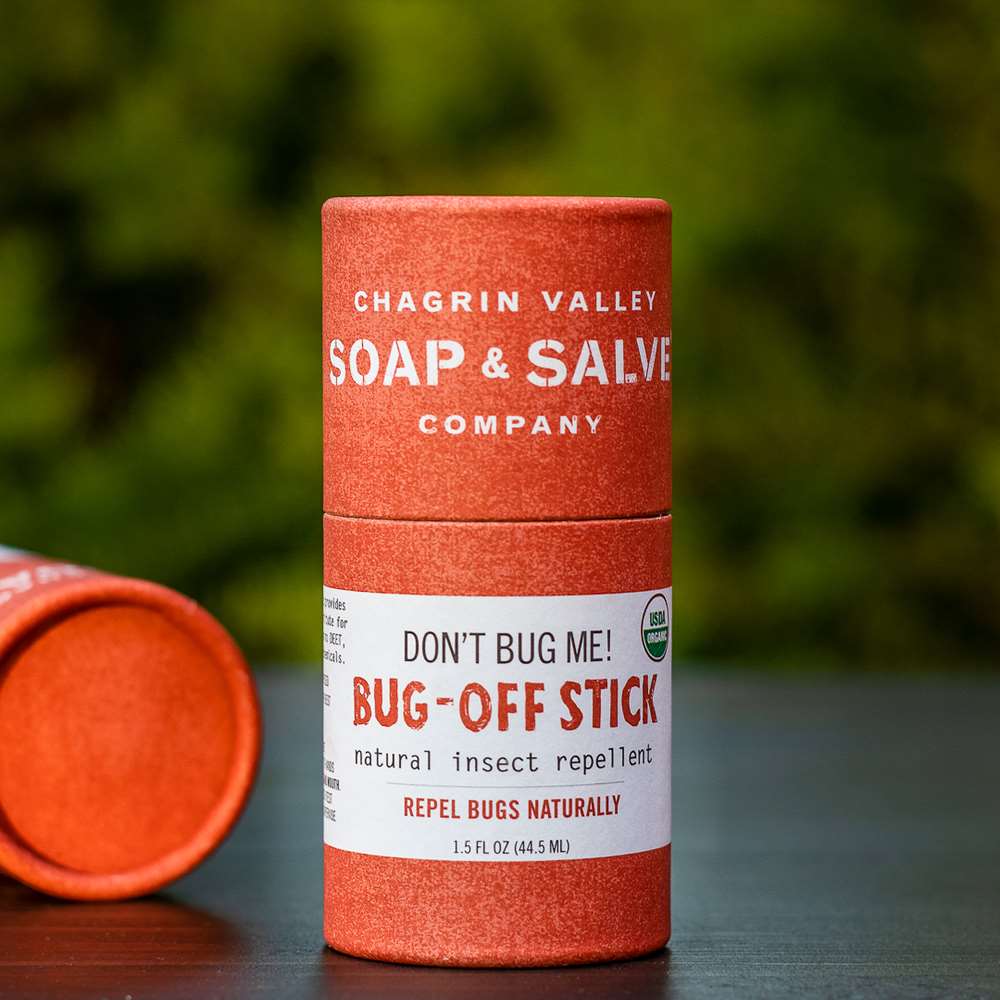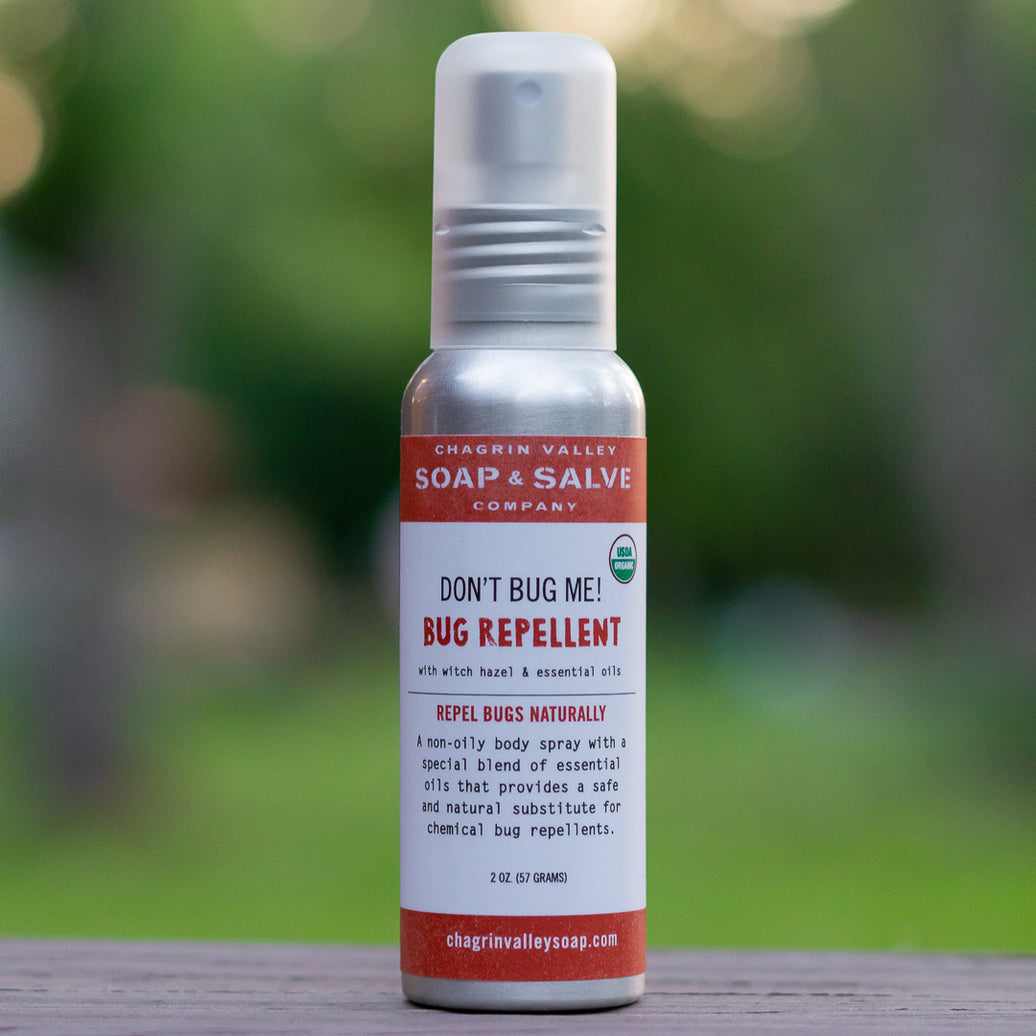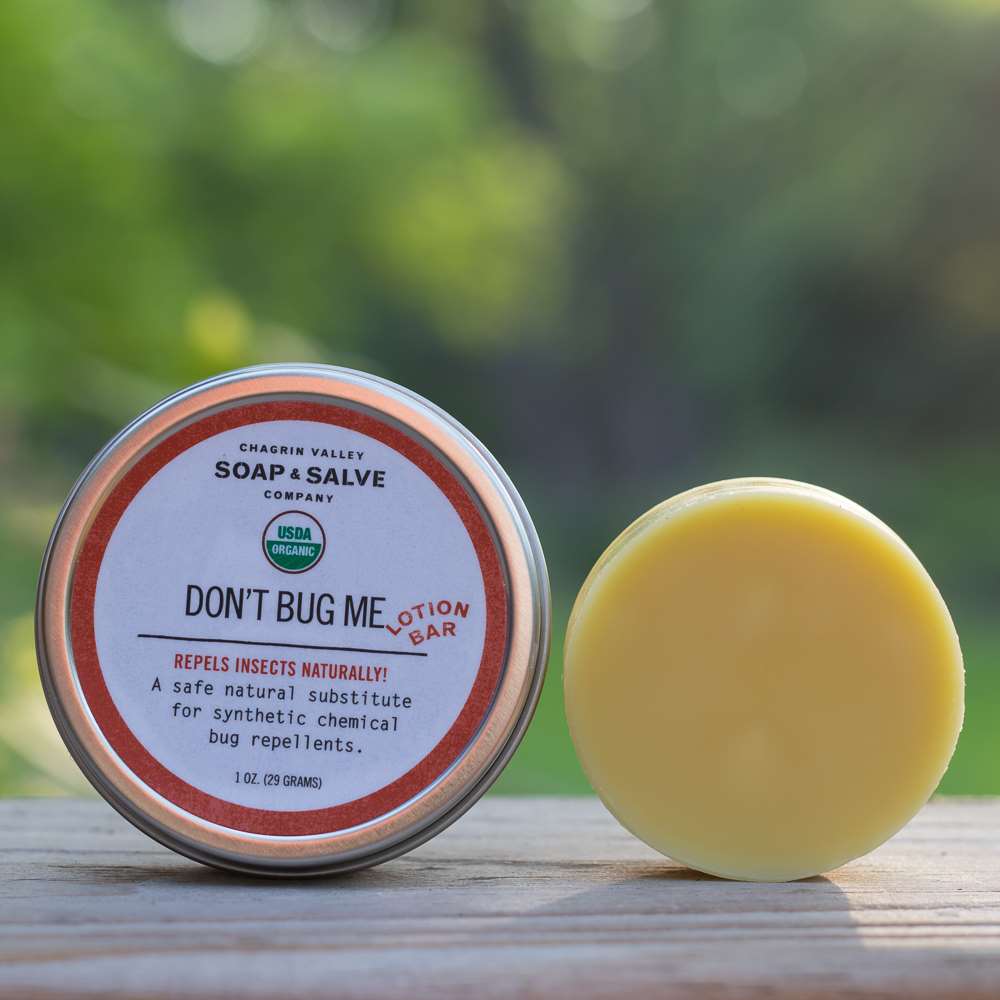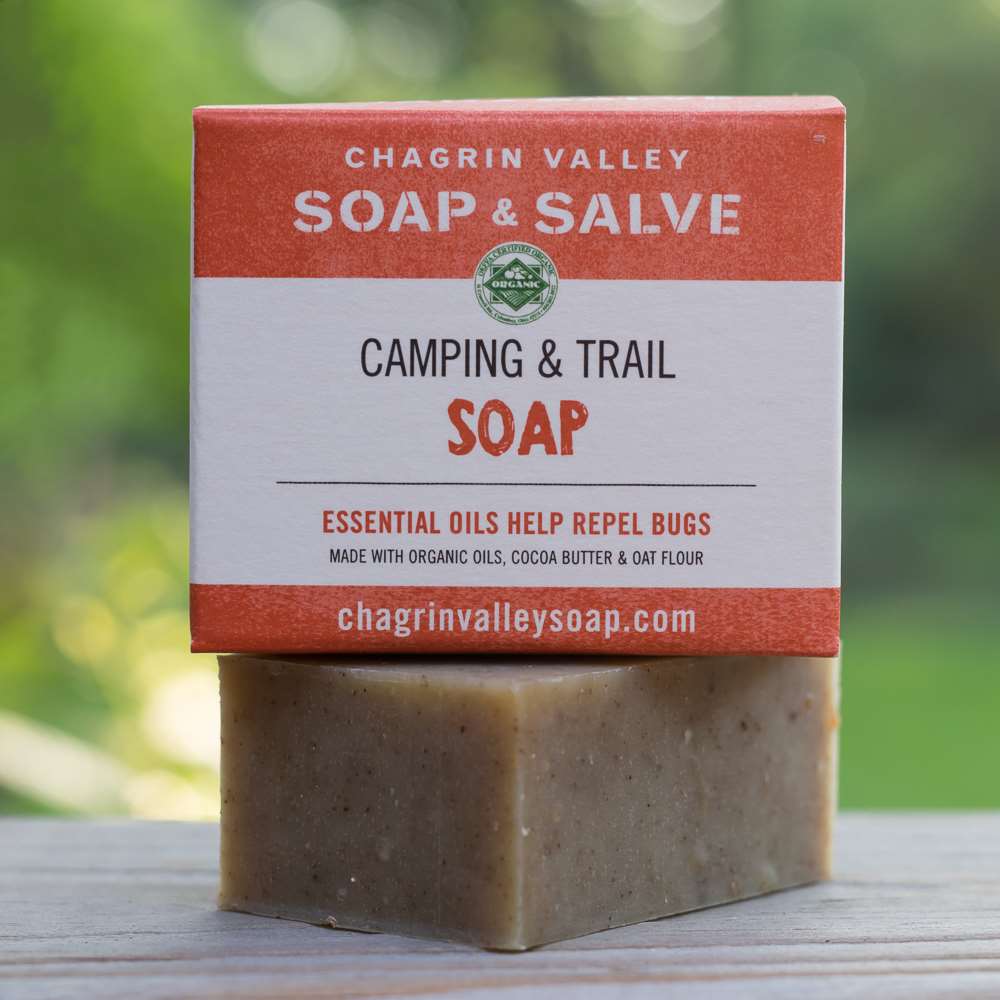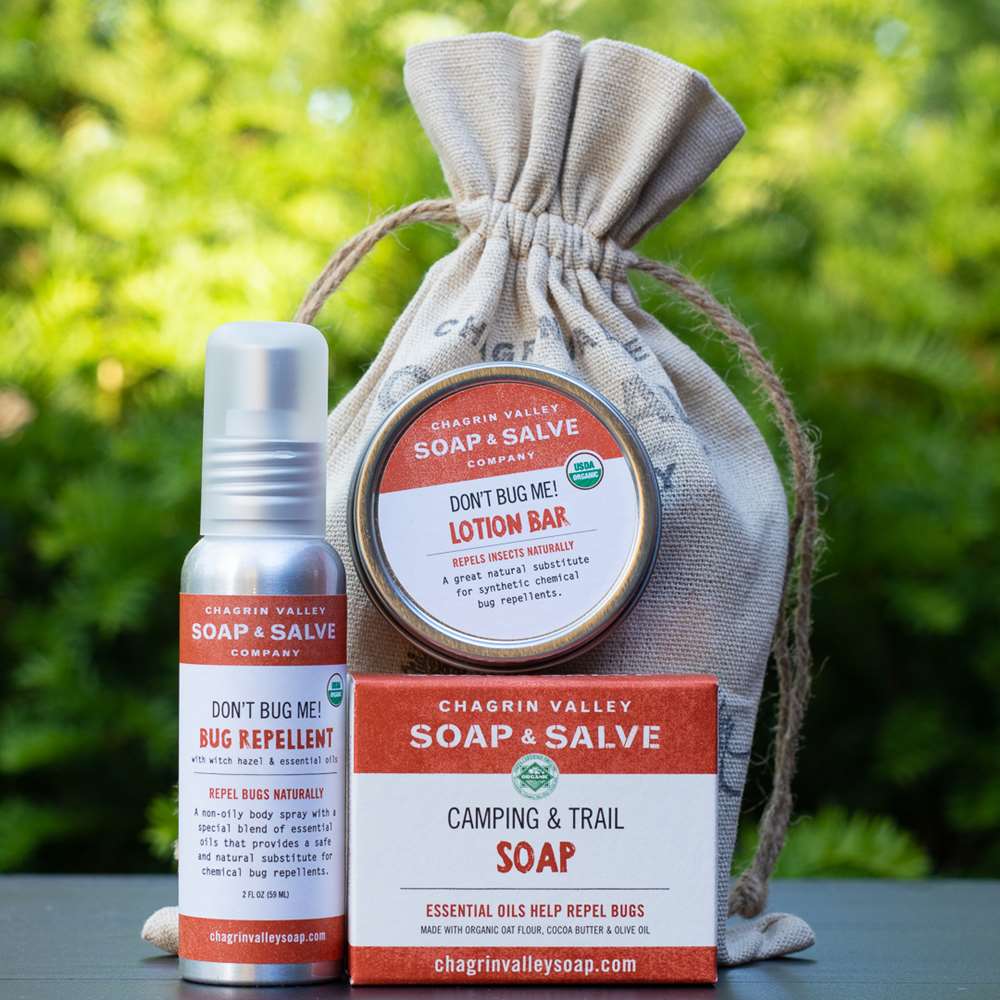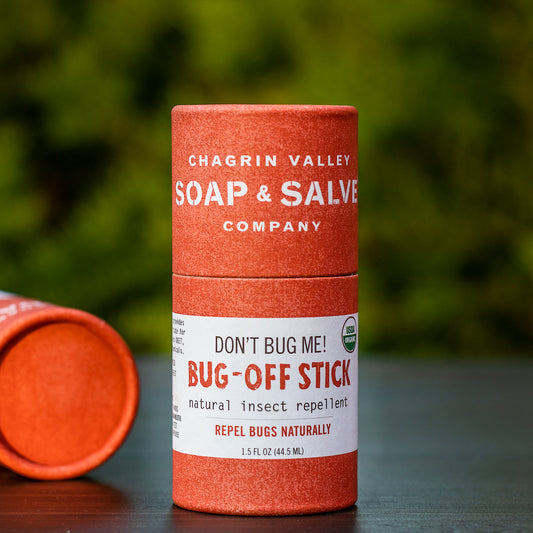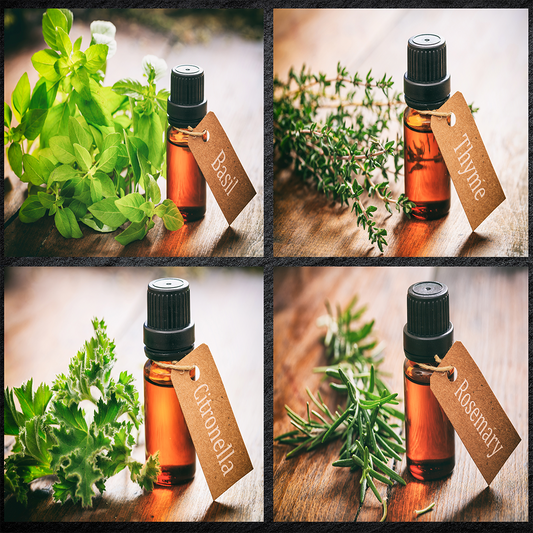Bug Repellent Plants & Smoke Bundles
Essential oils are created in nature, by plants. While I would love to believe that plants emit these beautiful scents just to please my sense of smell, I know that plant essential oils play an important role in the life of a plant for reproduction, communication, and protection from pests and predators.
Plants have used essential oils to protect themselves since the beginning of time. These volatile (easily evaporated) chemicals may repel harmful pests or they may attract beneficial predators that eat the destructive pests. Which explains why many of these oils are used in our natural bug repellents.
Keeping with our theme of using the "power of plants" as natural insect repellents, there are some other ways in which plants may help deter pesky bugs.
What Is The "Mosquito Plant"?
 Before discussing common bug repellent plants, I would like to clear up a common misconception about Citronella plants. When you go to your local nursery you will often find a plant called “The Mosquito Plant” or “Citronella Plant” that looks like those pictured in the pots.
Before discussing common bug repellent plants, I would like to clear up a common misconception about Citronella plants. When you go to your local nursery you will often find a plant called “The Mosquito Plant” or “Citronella Plant” that looks like those pictured in the pots.
This is not the plant that produces citronella essential oil.
It is actually a scented geranium, Pelargonium x citrosum, that produces a pretty pinkish colored blooms in summer.
Its leaves have a scent similar to citronella and it shares some of the same aromatic chemicals, but this scented geranium is unrelated to the true citronella.
This “mosquito (citronella) plant” is marketed as a plant developed to give off a mosquito repelling scent. However it contains less then 0.1 percent citronellal, the main component of citronella oil which gives it its distinctive aroma, compared to true citronella which contains at least 10 to 20 percent.
True citronella is in the genus Cymbopogon which it shares with lemongrass and palmarosa all of which are highly aromatic grasses. True citronella is a perennial clumping grass that grows to a height of 6 feet and is not frost hardy. The grassy citronella plant is often confused with lemongrass, which is similar in appearance. The difference is seen in their base stems, which are a reddish color on citronella and green on lemongrass.
I have talked with people who use "mosquito" plants all around their yards and swear that they help deter mosquitoes. I tried them a few seasons ago and did not notice a decrease is mosquito bites.
Bug Deterrent Garden Plants
Plant an Pollinator or Herb Garden
 While there is evidence that many herbs and flowers have bug repellant properties, that does not mean that lining your picnic area, patio or deck with these plants will prevent bug bites.
While there is evidence that many herbs and flowers have bug repellant properties, that does not mean that lining your picnic area, patio or deck with these plants will prevent bug bites.
Most of the research on bug-deterrent plants has been done on their oils, not the plants themselves.
I have found lots anecdotal support, but very few scientific studies that looked at whether the plant itself would dissuade mosquitoes from biting.
Although many web sites list plants that repel mosquitoes, very few provide any references to their source of information.
The secret to discouraging mosquitoes lies within the plant's oils.
We know these plants emit aromas that mosquitoes do not like. We also know that these plants will release their bug repelling oils when their aromatic parts are crushed. But the real question is, will a plant sitting in a pot or in your garden deter mosquito bites when you are seated a few feet away?
We may not know how much they will protect your family from bites, but adding flowering plants to your garden will help pollinators and add fragrance and beauty. Fresh herbs are also great to add to fresh summer recipes and to use for Insect Repellent Smoke Bundles (see below).
Planting a garden is a wonderful activity to do with children. Use the time to introduce them to the life cycle of a plant, the importance of plants, as well as the significance of pollinators and native pollinator plants to our ecosystem.
Here’s a quick list of some of the more common plants suggested for their insect-repelling properties. You can decide for yourself if you would like to experiment with bug-repelling plants. If you have had success with an insect repellent plant, please let us know in the comments section below.
Ageratum: Butterflies and hummingbirds love its fragrant blooms, but mosquitoes are not fond if its aroma.
Catmint, the ornamental cousin of catnip, contains nepetalactone which is often found in mosquito repellents.
Lantana is a flowering plant that can attract butterflies and hummingbirds while giving off a mosquito-repelling scent.
Lavender oil contains a compound known as linalool, which produces a strong odor that is believed to overload the sensitive olfactory organs of the mosquito.
Lemon Balm is related to mint and contains citronellal, the main component of citronella oil that mosquitoes dislike. It spreads quite rapidly and can be quite invasive.
Marigolds are often planted by gardeners because they repel other insects since they contain pyrethrum an ingredient found in many insect repellents.
Scented Geraniums, unlike typical geraniums, are not grown for their flowers but for the scented leaves. The mosquito plant is an example.
Monarda (Bee Balm) is famous for attracting pollinating insects such as bees and butterflies. The plant's volatile oils that give the leaves their scent, releases fragrances mosquitoes dislike.
 All types of mint plants may ward off mosquitoes. If you smash some mint leaves they can also help soothe bug bites. Be careful where you plant mint, it is an incredibly invasive perennial.
All types of mint plants may ward off mosquitoes. If you smash some mint leaves they can also help soothe bug bites. Be careful where you plant mint, it is an incredibly invasive perennial.
Rosemary smoke may help deter mosquitoes. Are mosquitos bothering your BBQ, toss a few sprigs of rosemary on the grill. Some say that rubbing a few sprigs over exposed arms or legs will help keep mosquitoes away, but I have never tried it.
Basil is a very pungent herbs that can help discourage flies and mosquitoes. Place a plant on your picnic table and scrunch a few leaves to release the oils.
Sage scented smoke may help keep bugs away. If you are gathering around an evening fire to roast some marshmallows, toss a few sprigs of sage into the fire.
Allium plants, from the onion family include onions, shallots, garlic, leeks and chives. When planted in your garden or a container, the scent can deter all types of bugs as well as the cute animals that eat our gardens.
Plant thyme between stepping stones in the garden. The secret is to crush the leaves to release the volatile oils. Burning thyme leaves can also be a deterrent.
Insect Repellent Smoke Bundles
What is an Herbal Smoke Bundle?
While burning herbs to release their aromatic smoke may seem like a new trend, the practice has been around since recorded history.
For centuries Indigenous People in North America have been sustainably harvesting sacred plants, drying them, and burning them in a sacred ritual called smudging, a ceremony for purifying or cleansing the soul of negative thoughts or cleansing a space to create positive energy.
“Smudging” has become increasingly popular among non-native people. However, the practice of smudging, the ritual and spirituality that surrounds the ceremony, and the plants used are considered sacred medicine to many Native American Nations.
There are many cultures that burn herb bundles for a variety of reasons, but to call it smudging misrepresents a time honored practice sacred to Indigenous people.
So while some may call these herbal smoke bundles “smudge sticks,” I am not a Native American, this blog is not about the ceremonial practice of smudging and I choose to honor the origin of this revered practice.
Why Use Herbal Insect Repellent Smoke Bundles
Have you ever attended a BBQ or picnic where someone was burning a very strong smelling citronella candle? It bothers my nose, makes me cough, and with every bite of my food I can taste the citronella.
Instead of the strong smelling bug candles, I like to make my own your own herbal smoke bundles.
When I was a kid (in the 1950s and 60s) we had these “insect repellent sticks” called “punks.” They were unscented wooden sticks that looked like incense sticks, but I have no idea what they were made of. We would light them, blow out the flame, and we all believed that the trailing smoke repelled mosquitoes.
The Smoke Bundle Idea Is A Simple One
As I discussed above the key to producing a strong insect-repellent scent is to release the essential oils within the plant. We can release these oils by crushing the foliage, but we can also burn sprigs of the dried plant to release its volatile oils in an aromatic smoke.
 There is no one right way to use aromatic insect repelling smoke. You can:
There is no one right way to use aromatic insect repelling smoke. You can:
- make herbal bundles as I describe below
- light one end of some select dried herb sprigs and allow them to smolder on a fire-resistant tray
- toss some dried herbs onto your grill, or into your campfire, fire pit or chiminea
Which Plants to Use For Bug Deterrent Smoke Bundles
If you plant herbs in your garden or in pots, plant some extra this year to use for smoke-bundles. Mosquitoes hate strong-smelling herbs. Most herbs emit an earthy, herbal aroma when burned that also provides a calming and soothing environment. As you experiment with different herbs you will find those that are pleasing to you but unpleasing to mosquitos. I discussed many of these above and some suggestions include.
- Sage
- Thyme
- Rosemary
- Lavender
- Lemon Balm
- Mint
- Thyme
- Chives
- Dill
How to Make an Herbal Insect Smoke Bundle
A smoke repellent bundle is made up of a bunch of dried herbs selected for their insect repelling properties and bound together by string.
For the string use 100% cotton string or twine made from natural materials like hemp. Make sure that the string is safe to burn.
Making these herbal bundles is a great family-friendly project. The kids can help with harvesting, tying, and observing the bundles as they dry. It can be a great lesson in using their senses of sight, touch, smell, and taste (if it is a safe plant to eat).
 Gather Your Supplies
Gather Your Supplies
- Fresh Herbs
- Natural String or Twine
- Scissors
- Paper Grocery Bag*
The Herbs
For each smoke bundle gather a large handful of herbs (about 15 – 20 sprigs) including stems. When choosing your herbs, make sure that they are free of pesticides and are grown using sustainable practices.
Cut the herbs to similar lengths, about 6 inches long, so they all burn at the same rate. Do not remove the stems. Your bundles can be as thick or as long as you would like.
*I like to lay my herbs in a single layer on a clean paper grocery bag overnight, especially when using very leafy plants like sage. This allows them to wilt a bit which I think makes them easier to wrap and shape.
Making the Bundle
 Depending on the herbs I have availale, I like to make a few bundles at a time so they are always available.
Depending on the herbs I have availale, I like to make a few bundles at a time so they are always available.
- For each bundle cut a piece of twine that is about 5 times the length of your bundle.
- Bundle the plant sprigs together. If you are using different types of herbs, I usually place any smaller plants, more delicate herbs, or plant pieces in the middle of the bundle.
There are numerous ways to wrap your bundle. I am sharing the method that I use.
- Using the string, tie the bundle at the stem base with a secure knot to bind the ends together. If you plan on hanging your bundles to dry, leave a string tail at the end of your knot.
- While holding the bundle in one hand, use your other hand to wind the string up the bundle pushing the leaves up as you wind the string. Tie a knot at the top.
- Then wind the string down the bundle creating a crisscross design over the other string. This helps hold all the leaves in place. Tuck in any leaves or sprigs that stick out, pushing them under the string as you go.
As herbs the dry they will shrink a bit so it is important to wrap the bundle tightly, but not so tight that the herbs gets crushed (you don’t want to waste any of those precious oils.) Tie another knot at the bottom at the base of the stems.
I like to create a little grip at the bottom by wrapping the string around the stems several times. Do not cut off the extra string yet.
Dry The Bundle
 Once the bundle is bound together, use the remaining string to hang it upside down in a sunny spot, like a windowsill.
Once the bundle is bound together, use the remaining string to hang it upside down in a sunny spot, like a windowsill.
Allow 2 - 3 weeks drying time. This time will vary depending on which herbs are used, the thickness of the bundle, and the humidity in your air.
If you don’t want to hang the herbal bundles, place them on a wire rack (like the cooling racks used in baking) to allow for airflow. I often leave mine to dry in the sun, but be mindful of rainy days.
A little note. You can add a freshly made bundle, even before drying, to the edge of a fire pit. The aromatic smoke will be less potent, but the bundle will smolder like fresh green wood.
Ready to Light
 After your smoke bundle is completely dry, it is time to light it. Store any extra bundles in a cool, dry place.
After your smoke bundle is completely dry, it is time to light it. Store any extra bundles in a cool, dry place.
- Holding the smoke bundle at the base at a 45 degree angle, light the other end in a safe area over a fire-resistant surface.
- Let it burn for a about 20 seconds as you wait for the bundle to begin to smoke.
- Carefully blow out out the flame and let the end continue to smolder as it releases its aromatic smoke.
If you are not using it in a campfire or fire pit, place the bundle on a fire-resistant dish, bowl, or tray near your picnic area. Never leave a burning bundle unattended.
Extinguish your Bundle
When finished with the smoke bundle, you can save leftovers to burn again later. Press the burning tip firmly against your firesafe container or in sand until the smoke no longer rises.
Do not use water to extinguish the bundle, it can damage the tip of the stick and make it more difficult to light next time.
Helpful Tips
Do you have a rosemary plant that you forgot to water or an herb that did not survive an early frost? Although the aromatic oils may not be as strong, do not toss them out. Use them to make smoke bundles.
These bundles make great gifts, so you can get as fancy as you want. Add in some dried flowers. Use some extra string when tying your bundle to create a bow with the ends of the thread.
Think ahead and save some smoke bundles for holiday gifts or a spring mother’s day gift. A basket of smoke sticks makes a great gift for friends that have a fire pit or like to picnic or camp. Print up a little card with instructions.
Help kids make their own gifts for teachers, grandparents etc.
Conclusion: Natural Ways to Deter Mosquitoes

Getting rid of standing water around the yard is one of the best ways to help control mosquitoes where you live. Mosquitoes need water to survive and breed.
Female mosquitoes lay their eggs in standing water and the young mosquitoes live in the water for at least a week before they begin to fly.
Burn dried sprigs or bundles of sage, rosemary, thyme or other herbs.
Use natural insect repellents that harness the power of plants. Our “Don’t Bug Me!" bug repellent products feel great on your skin, are 100% natural, USDA Certified Organic, and can be used by the whole family.
Have you tried using insect repellent plants or herbal smoke repellent bundles? Do you have any other tips for naturally repelling annoying bugs?
